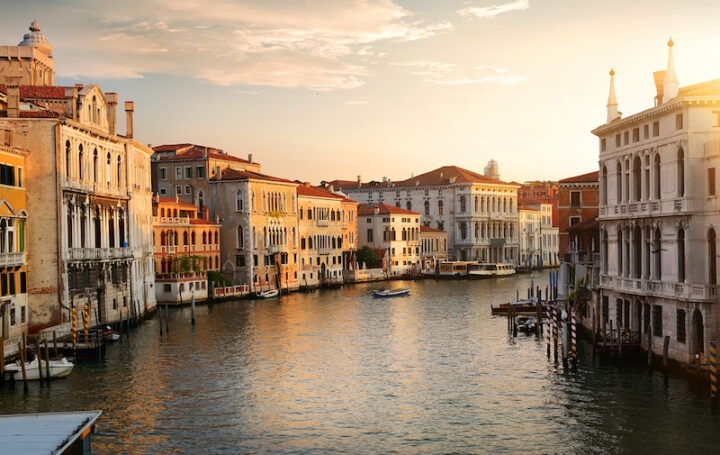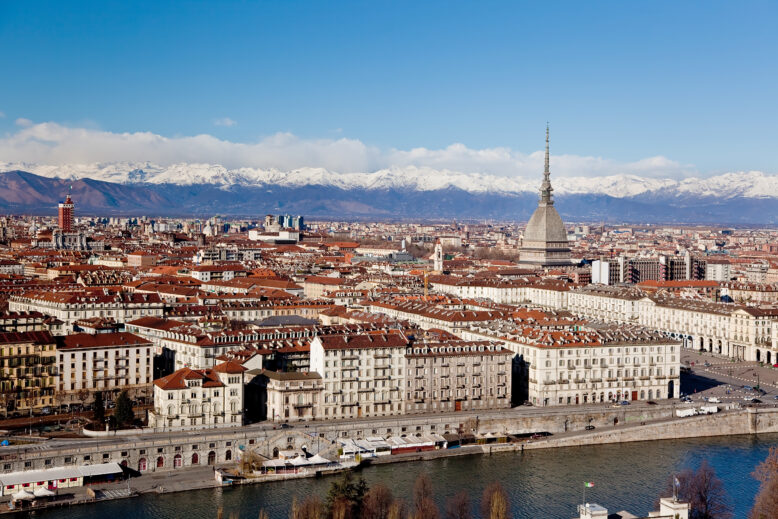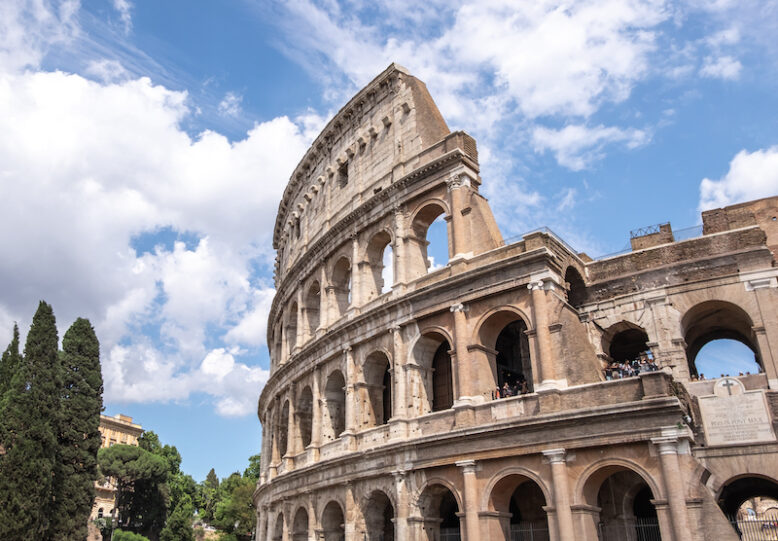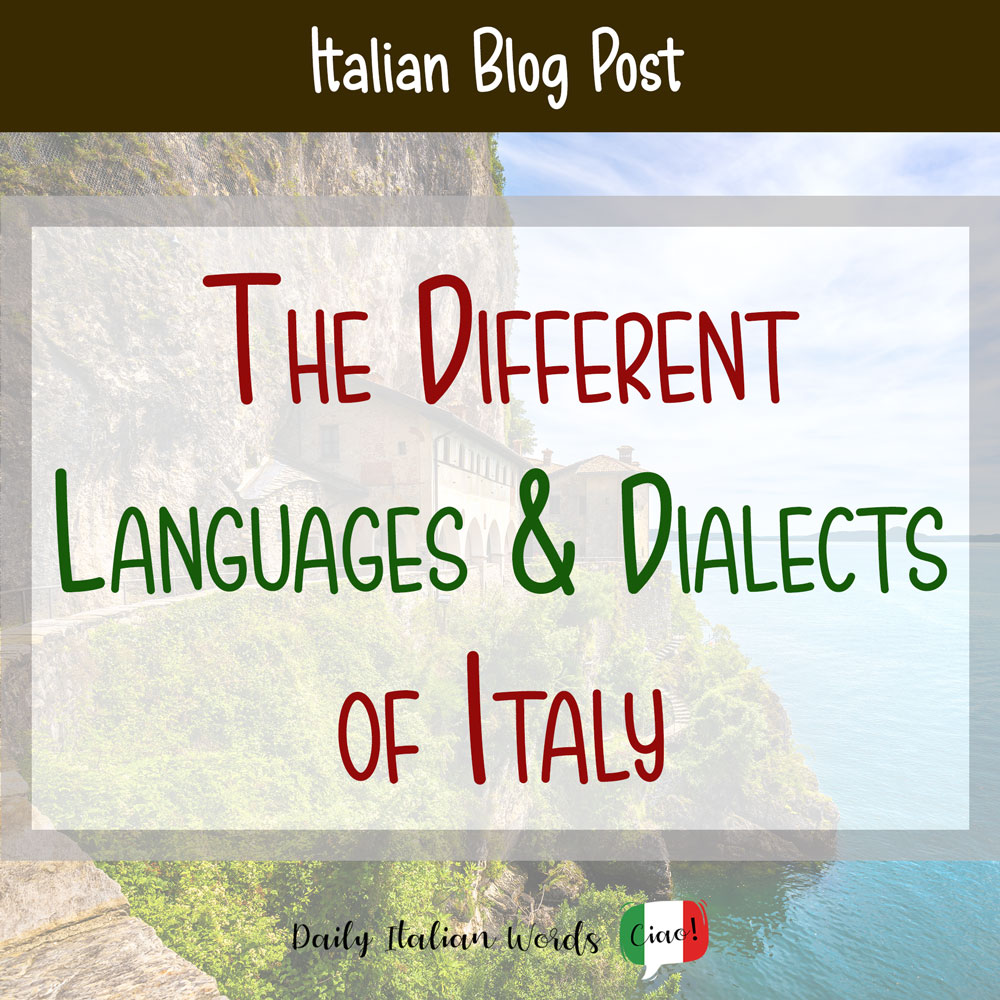Italy is a country with hundreds of local and secondary languages and dialects. These linguistic entities began to emerge shortly after the fall of the Roman Empire. Since then, they have shaped and shaped a society that, years later, finally adopted a standard language: Italian.
Nonetheless, local dialects have withstood the test of time in specific regions and provinces of the peninsula, albeit at risk of extinction. In fact, they are spread across the country, albeit limited to certain geographic areas, and often do not understand each other.
Major shifts in pronunciation, vocabulary, and morphosyntactic processes make these languages look very different from each other. This is mainly due to frequent invasions in the past and foreign domination that has occurred since the Middle Ages.
In today’s article, we’ll take a look at how these Italian dialects and languages are classified and where they are found within Italy.

List of Italian dialects – major groups
First, it is important to clarify that there are over a hundred dialect variants in Italy, but dialects with similar characteristics have been classified. Primary clusters (from north to south) can be defined as follows:
- Venetian
- Gallic italic language
- Intermediate dialect
- Tuscan-Corsican
- Sardinian language
- Rhaeto-Romance language
- Neapolitan language
- Sicilian
Each of these language groups has dozens of local variants that vary by city or geographic area.
In a previous article, we took a deep dive into Sicily and Neapolitan language. The two dialects present so many differences that they appear to be two completely different languages. This also applies to the other language groups mentioned above. Furthermore, as we will see later, there are many foreign languages in Italy that were not born on the peninsula at all.
Northern Italian dialect
Venetian and Reto Romance
This group is connected to the northeastern part of the peninsula. Known as Vèneto, the language stretches from Venice to Verona and from Belluno to southern Trentino. There are eight main variants of this Romance language, distributed as follows:
- Central Veneto
- Venetian (The Venetian)
- Oriental Veneto
- Trevigano (province of Treviso)
- Veronese (province of Verona)
- Vicentino (Vicenza Province)
- Bellunese (province of Belluno)
- Trentine (Central Trentino)
Throughout the Northeast, some words even vary by city, such as Padua and Venice, which are relatively close together.
Instead, the Rhaeto-Romance language appears in the upper northeastern region of Friuli Venezia Giulia bordering Slovenia and Austria. Here you will encounter Latin or Ladino, as well as the Friulian dialect.

Gallic italic language
This broad language group includes four main regional dialects, namely:
- Liguria (Liguria)
- Piedmontese (Piedmontese)
- Lombardo (Lombardy)
- Emilia (Emilia Romagna)
As you might expect, these regional dialects consist of a number of minor regional languages, the most famous of which are Genovese from Genoa and Torinese-cuneese, which stretches between Turin and Cuneo.
Likewise, Lombardy has many forms that are very similar to each other and are understood both in the Lombardy region and outside. This is because it is close to standard Italian.
Finally, there are so many dialects in Emilia-Romagna that it is difficult to list them all. But they are distributed in specific areas inside and outside the region. For example, Romagnolo is the most famous and is spoken in the cities of Rimini, Riccione and Ravenna on the Adriatic coast.
People from Bologna, Reggio Emilia, Modena, Carpi and surrounding areas use all variants of Emiliano. The same group crossed the regional border and appeared in the northern Marche and the Tuscan border.

Central and southern Italian dialects
Tuscany-Corsican Group and Sardinian
The languages belonging to this group are separated by the Tyrrhenian Sea. Specifically, the Tuscan region uses a variant of Tuscan, while northern Sardinia uses Corsican. The former hosts the father of Italian – Florence – a language elevated by writers and poets such as Dante Alighieri, Francesco Petrarch and Giovanni Boccaccio.
The Corsican language is spoken by people living in the provinces of Sassari and Olbia in Gallura. This is mainly because of migrations and contacts between Sardinians and Corsicans. On the other hand, the rest of the island speaks variants of Sardinian including Sardo campidanese, Sardo nuorese and Sardo logudorese. Other Italian speakers simply cannot understand Corsican and Sardinia.

Intermediate dialect
The central regions of Italy are dominated by this language group. It touches Lazio and the Italian capital Rome, as well as Umbria, Marche and the west of Abruzzo. Of these dialects, the most recognized are Romanesco, Laziale, Umbrian and Sabino.

Neapolitan language
This group is the broadest, along with the Sicilian group. Its variations appear in six different southern regions. i.e. they are:
- campania
- Puglia
- Basilicata
- Calabria
- Abruzzo
- Morris
The Neapolitan language is characterized by the frequent use of schwa, the phonetically written upside-down e. ə is a vowel that is also used in English-speaking countries, and it is pronounced with an indeterminate sound that requires no jaw or mouth muscle effort.To understand it better, we recommend reading our Neapolitan language and its differences from Italian.
Today, the Neapolitan language is spoken by more than 6 million people, and its language variations differ only in accent and pronunciation.

Sicilian language
Sicilian is the main language of Sicily. It is also spread over the Eolie and Pantelleria Islands. It incorporates various regional dialects such as Palermo, Catania, Enna, etc.
It is also used in Salento in the southernmost part of Puglia, where it is mixed with the Greek descendant Greko. The Sicilian variety is also found in southern Calabria, which is separated by the Strait of Messina.
Sicilian is difficult for Italians to understand. To learn more about it, we recommend you to visit our article on the main differences between Sicilian and Italian.

Italian foreign language
This article would not be complete if we hadn’t dedicated a section to the foreign languages that entered the peninsula and formed part of its rich cultural tapestry.
First, we have Occitan and Provencal, the languages spoken by the Val d’Aosta and West Piedmontese communities. The former is an official language in Switzerland, borrowed from these linguistic communities bordering France and the Alps. The latter is mainly used in Provence in southern France, mainly between the French and Italian Alps.
Also, it is important to know that the South Tyrolean variant of German is spoken almost throughout Trentino. Likewise, Northern Piedmont and Valle d’Aosta also speak German.
A curious presence in northwestern Sardinia is the Catalan language of Catalan, although the regions where it is spoken are limited to Capo Coccia and Alghero.
Finally, Slovenian is spoken along the border between Slovenia and Friuli Venezia Giulia. In Molise, there is a small Croatian-speaking community.
in conclusion
As we have seen, Italy is far from the monolingual society it portrays. Rather, it is a country full of cultural crossroads and fascinating languages, each of which deserves a place in Italy’s mosaic of language, customs and history.

